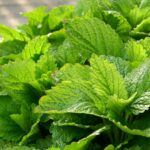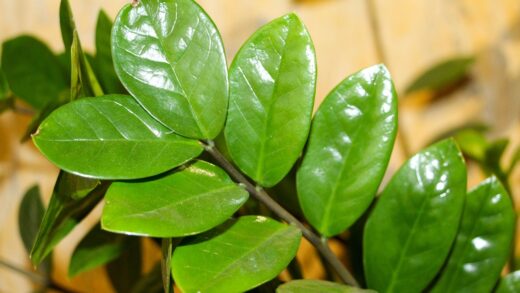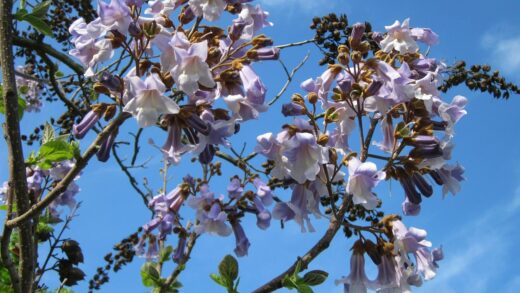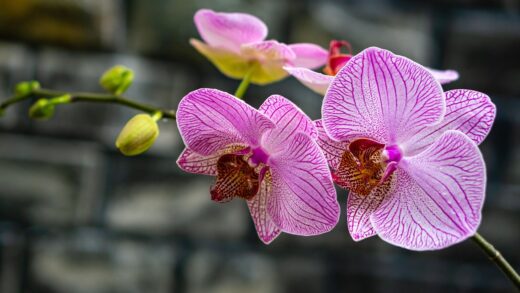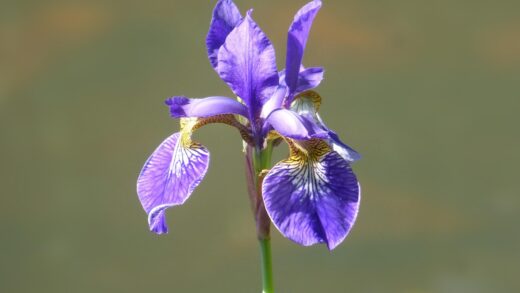The practices of pruning and cutting back a white calla lily are straightforward yet essential maintenance tasks that contribute significantly to the plant’s health, appearance, and overall vigor. Unlike many shrubs or trees that require complex structural pruning, the maintenance of a calla lily primarily involves the timely removal of spent flowers and senescent foliage. This process, often referred to as deadheading and cleaning, is not merely for cosmetic purposes. It plays a vital role in directing the plant’s energy towards more productive ends, such as producing new blooms and strengthening its rhizome for the following season. A proper understanding of what to cut, when to cut, and why you are cutting is fundamental to a sound horticultural routine.
The primary pruning task during the growing season is the removal of faded flowers, a process known as deadheading. The elegant white spathe of the calla lily will eventually lose its vibrancy, often turning green or brown and beginning to wilt. Allowing this spent flower to remain on the plant signals the plant to begin producing seeds. Seed production is an incredibly energy-intensive process that diverts valuable resources away from the development of new flowers and the storage of energy in the rhizome. By promptly removing the old bloom, you interrupt this process and encourage the plant to channel its energy back into producing more flowers.
The method for deadheading a calla lily is simple. Once a flower has clearly faded, trace its long, leafless stalk all the way back to the base of the plant. Using a pair of clean, sharp pruning shears or a knife, make a clean cut as close to the base as possible without damaging any of the surrounding leaf stems. It is important to remove the entire flower stalk, not just the flower head itself. This not only provides a tidier appearance but also removes the entire structure that would have supported seed development.
Regularly deadheading throughout the blooming season can have a noticeable effect on the plant’s performance. It can prolong the overall flowering period and, in some cases, encourage the production of a second or even third flush of blooms from a healthy, vigorous plant. This simple act of removal is one of the most effective ways for a grower to actively manage the plant’s energy allocation, ensuring that its resources are used in a way that maximizes its ornamental display. It is a continuous process that should be attended to as soon as each flower begins to decline.
Beyond the immediate benefit of promoting more flowers, deadheading also contributes to the prevention of disease. The decaying tissue of a spent flower can become a breeding ground for fungi, such as Botrytis blight (gray mold), especially in humid conditions. By removing this decaying organic matter from the plant, you reduce the likelihood of such pathogens becoming established and potentially spreading to the healthy foliage and a new generation of flowers. This makes deadheading an important part of a good sanitation and disease prevention strategy.
More articles on this topic
Managing and removing foliage
The management of the calla lily’s lush, arrow-shaped leaves is another key aspect of its maintenance, but the approach here is different from that of deadheading flowers. Throughout the growing season, it is normal for occasional lower leaves to turn yellow and wither as they age. These individual yellow or brown leaves should be removed for the same reasons of aesthetics and sanitation. Just as with the flower stalks, trace the stem of the dying leaf back to the base of the plant and cut it off cleanly. This helps to maintain good air circulation through the plant’s crown.
However, it is critically important to understand the difference between removing an occasional old leaf and cutting back the main foliage at the end of the season. While the plant is actively growing, the green leaves are its powerhouses, performing photosynthesis and creating the energy needed for its survival and growth. It is a mistake to remove healthy green foliage during the growing season unless it is damaged or diseased. Reducing the number of healthy leaves would be akin to reducing the number of solar panels that power the plant, thereby weakening it.
The most crucial rule regarding the foliage comes into play at the end of the blooming season, as the plant prepares for dormancy. As autumn approaches, the leaves will naturally begin to turn yellow and wilt. It is imperative to resist the urge to cut this foliage back prematurely. During this senescence process, the plant is actively withdrawing valuable nutrients and energy from the dying leaves and transferring them down into the rhizome for storage over the winter. This process is vital for fueling the initial burst of growth in the following spring.
The correct time to cut back the main foliage is only after it has completely withered and turned brown and is either dry to the touch or has been killed off by the first frost. At this point, the energy transfer is complete, and the leaves have served their purpose. The dead foliage can then be cut back to a few centimeters above the soil line. Removing the dead leaves at this stage helps to tidy up the garden or pot and eliminates potential hiding spots for overwintering pests and fungal spores.
More articles on this topic
The right tools for the job
Using the appropriate tools for pruning and cutting back your white calla lily is essential for making clean cuts and preventing damage or the introduction of disease. While calla lily stems are not woody, they are thick and fleshy, and using the wrong tool can crush the stem tissue rather than cutting it cleanly. Crushed stems can create a larger wound that is more susceptible to infection from bacteria and fungi. The ideal tool for most tasks on a calla lily is a sharp pair of bypass pruning shears.
Bypass pruners work like a pair of scissors, with two curved blades that pass by each other to make a clean cut. This action is much healthier for the plant tissue compared to anvil-style pruners, which have a single blade that closes against a flat surface and can crush the stem. For smaller, more delicate stems or for getting into tight spaces at the base of the plant, a pair of floral snips or a sharp horticultural knife can also be very effective. Whatever tool is chosen, the most important characteristic is that the blade is sharp.
The second non-negotiable rule of pruning tools is sanitation. Plant diseases can be easily transmitted from one plant to another on the surface of contaminated tools. It is a fundamental practice of good garden hygiene to sterilize your pruning tools before you begin work and between plants. This is especially important if you have recently been working with a plant that you know or suspect has a disease. Sterilization is a simple process that can save you from significant problems down the line.
To sterilize your tools, you can simply wipe the blades thoroughly with a cloth or cotton ball soaked in isopropyl (rubbing) alcohol. A solution of one part household bleach to nine parts water is also a highly effective disinfectant, though it can be more corrosive to the metal over time. After using a bleach solution, it is a good idea to rinse the blades with clean water and dry them to prevent rust. Making this simple step a regular habit is one of the hallmarks of a careful and responsible gardener.
Pruning for propagation
While the primary reasons for cutting a calla lily are for maintenance and energy management, pruning also plays a role in the most common method of propagation: rhizome division. This process, which is best performed during the plant’s dormant period, involves cutting the rhizome clump into smaller pieces. Although this is not pruning in the traditional sense of managing top growth, it requires the same principles of using clean, sharp cutting tools to ensure the health of the new divisions.
After the dormant rhizome clump has been lifted from the soil and the excess dirt has been brushed away, you will need a sturdy and sharp tool to divide it. For smaller rhizomes that are loosely connected, it may be possible to gently break them apart by hand. However, for a larger, more congested clump, a clean, sharp knife, such as a soil knife or an old kitchen knife dedicated to garden use, is the best tool. The goal is to make decisive, clean cuts to separate the clump into sections, each with at least one or two growth buds or “eyes.”
The principle of making clean cuts is vital here to minimize the surface area of the wound and to create a smooth surface that can heal or “callus” over more effectively. A jagged cut made with a dull tool creates more opportunities for soil-borne pathogens to enter the rhizome and cause rot. After the cuts have been made, it is a crucial step to allow the cut surfaces to dry and form a callus before replanting. This is typically done by leaving the divided pieces in a dry, well-ventilated area for a day or two.
Some gardeners also choose to treat the freshly cut surfaces with a fungicide powder before the curing period. This provides an extra layer of protection against fungal infections as the new divisions become established in the soil. This application of horticultural prudence, starting with a sharp, sterile cut and ending with proper curing, ensures that the process of propagation through division has the highest possible rate of success, leading to healthy new plants that are genetically identical to the parent.
Distinguishing pruning from harvesting
It is important to distinguish the horticultural practice of pruning from the act of harvesting the flowers for floral arrangements. While both involve cutting the plant, the purpose and sometimes the timing can differ. Pruning, as discussed, is done for the health and long-term performance of the plant. Harvesting, on the other hand, is done to enjoy the blooms indoors. Fortunately, for the white calla lily, harvesting the flowers effectively serves the same purpose as deadheading, so it does not harm the plant and can actually be beneficial.
When cutting calla lily flowers for a vase, the technique is essentially the same as deadheading a spent bloom. Use a sharp, clean knife or shears to cut the flower stalk as close to the base of the plant as possible. It is best to harvest the flowers in the morning when they are fully hydrated. The ideal time to cut is when the spathe has fully unfurled but before the central spadix has shed a significant amount of its yellow pollen. This will ensure the longest possible vase life for the cut flower.
Immediately after cutting, the flower stalks should be placed in a clean vase filled with fresh water. To further extend their life indoors, you can re-cut the stems at an angle under water before arranging them. This prevents air bubbles from entering the vascular system and blocking water uptake. Changing the water in the vase every day or two and using a floral preservative will also help to keep the elegant white blooms looking fresh for as long as possible, often for a week or more.
By harvesting flowers for indoor enjoyment, you are effectively performing the beneficial task of deadheading. You are preventing the plant from setting seed and encouraging it to redirect its energy into producing more flowers or strengthening its rhizome. Therefore, you should not hesitate to cut and enjoy these beautiful blooms. It is a rare and fortunate case in gardening where the act of harvesting for personal pleasure aligns perfectly with a practice that promotes the health and productivity of the plant itself.








